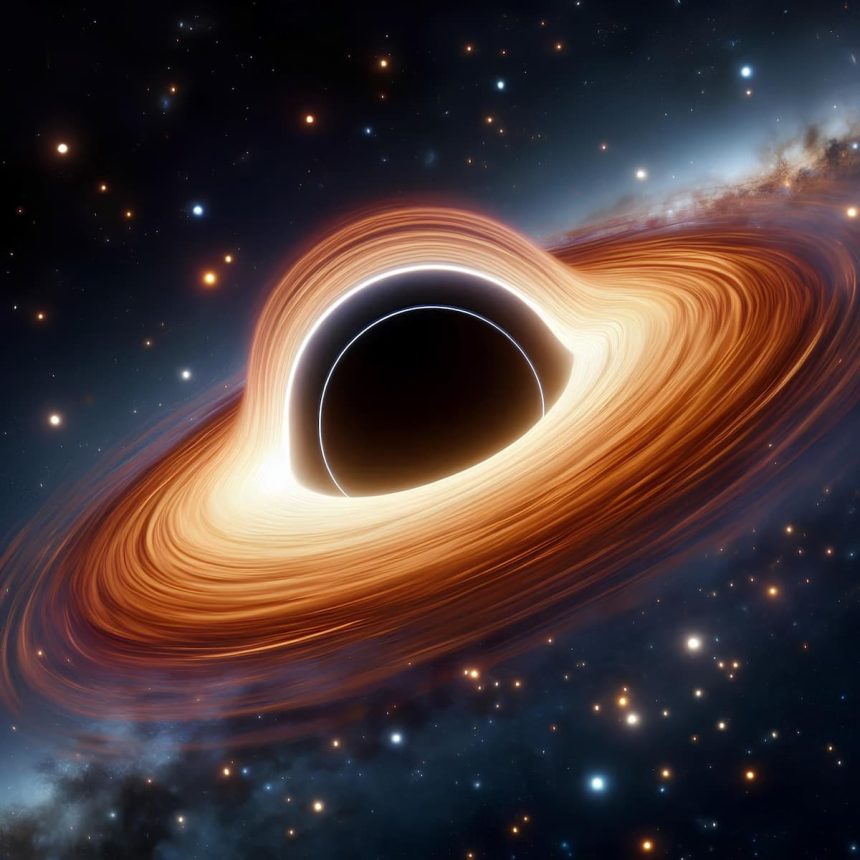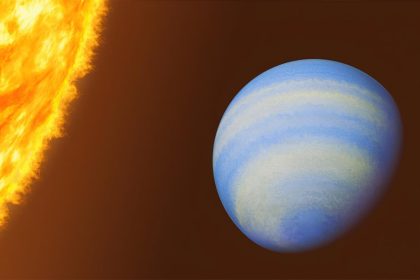While performing a detailed simulation of the formation of a supermassive black hole, researchers discovered that magnetic fields play a much more important role than previously thought. While it was believed that the accretion disk was relatively flat, the influence of the magnetic field would make it rather puffy and rough.
The gravitational force of a black hole attracts matter, which first orbits around it and forms an accretion disk. Intense radiation from this disk enables the imaging of black holes, with the first indirect image appearing in 2019. However, the way these disks of matter form and behave remains partly misunderstood.
Gaps in Simulation Scales
To analyze complex cosmological processes in depth, physicists usually resort to computer simulations. This type of simulation is generally based on parametric data governing the environment of these objects, such as equations of gravitational processes and molecular interactions within the surrounding matter.
For example, if a gas cluster becomes dense enough due to gravitational collapse, computers deduce that a star forms. However, “if you just think that gravity pulls everything together and then the accumulated gas forms a star and stars accumulate, you’re completely wrong,” explains theoretical astrophysicist Philip Hopkins in a blog post from the California Institute of Technology (Caltech).
Indeed, many processes influence stellar environments. Stars, for example, can emit radiation fluxes that can “blow away” surrounding gas and matter, altering their chemistry. Computers must therefore take these processes into account as they regulate the number of stars that can form within a galaxy.
On the other hand, the physical parameters to include are different when it comes to larger scales.
The behavior of atoms and molecules in galaxies, for example, is extremely important. However, for accretion disks, molecular chemistry can be negligibly integrated into simulations (or even ignored), as the environment is too hot for atoms and molecules to exist. Accretion disks are thus composed of ionized plasma.
However, to simulate all the physical processes occurring within a black hole’s accretion disk, all scales must be taken into account.
However, “some codes contained the physics needed to solve the small-scale part of the problem and others contained the physics needed to solve the larger part, but nothing allowed to do both,” says Hopkins.
To fill these gaps, Hopkins and his colleagues imagined and developed a new type of simulation combining both scales for the first time. The project was born from a collaboration between the Feedback in Realistic Environments (FIRE) simulation program, which focuses on large cosmological scales (such as galactic collisions), and STARFORGE, dedicated to smaller scales (such as individual stars). Their results are detailed in The Open Journal of Astrophysics.
Puffy Accretion Disks
The Caltech team used a technique known as “superzoom” to perform the simulation, which targeted a supermassive black hole. They notably developed a computer program called GIZMO that adapts the FIRE program to make it compatible with STARFORGE, and vice versa. “We designed it in a very modular way, so that you can turn on and off any piece of physics for a given problem while making sure they’re all compatible with each other,” explains Hopkins.
For this type of object, the resolution obtained is 1000 times higher than the previous simulation record.
Hopkins’ technique allowed modeling the accretion disk of a supermassive black hole about 10 million times the mass of the Sun in the early Universe. The simulation shows a process where a stream of matter is torn from a protostellar cloud and begins to swirl around the black hole. The algorithm allows for observing in detail each step of the gas’s journey towards the edge of the black hole.
The team was surprised to find that magnetic fields play a much more important role than previously thought in the formation of the accretion disk. Physicists initially assumed that thermal pressure (the pressure variation caused by the temperature change of the gas in the accretion disk) prevented them from collapsing under the influence of the black hole’s gravitational force, while the influence of the magnetic field would be minor. This would give a flattened appearance to the accretion disk.
However, the new simulation shows that the pressure exerted by the magnetic field is 10,000 times greater than the thermal pressure, which causes the disk to puff up. “Our theories told us that disks should be flat like pancakes,” explains Hopkins. “But we knew this wasn’t true, because astronomical observations reveal that disks are actually puffy and velvety, more like a cake.”
These results could have important implications for predictions about their mass, density, thickness, the speed at which matter moves within them, and even their geometry. The GIZMO program also paves the way for other simulations where scale differences are lacking, such as galaxy mergers and the formation of the first stars in the Universe, the team suggests.



